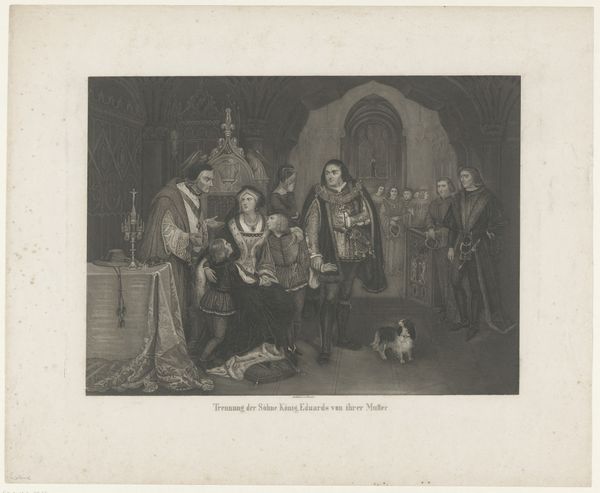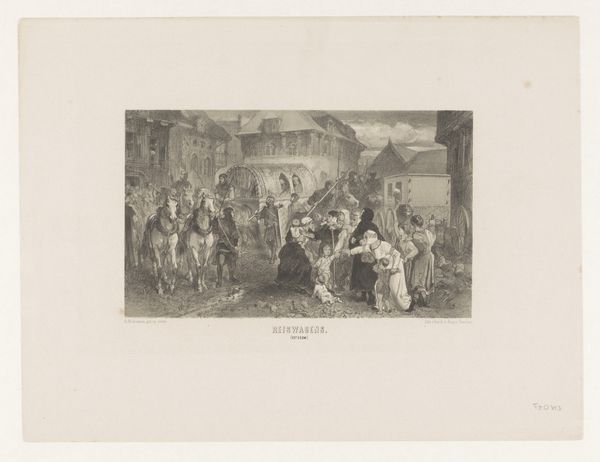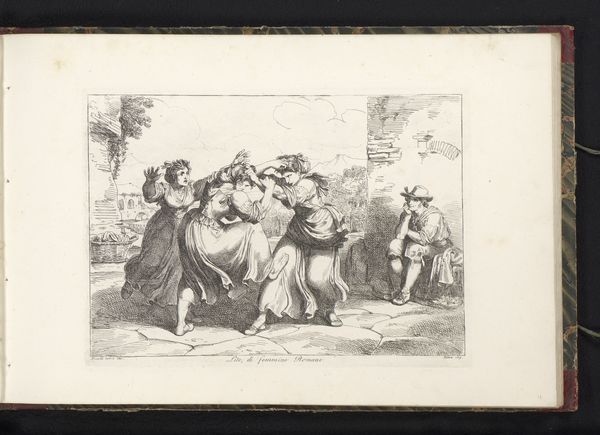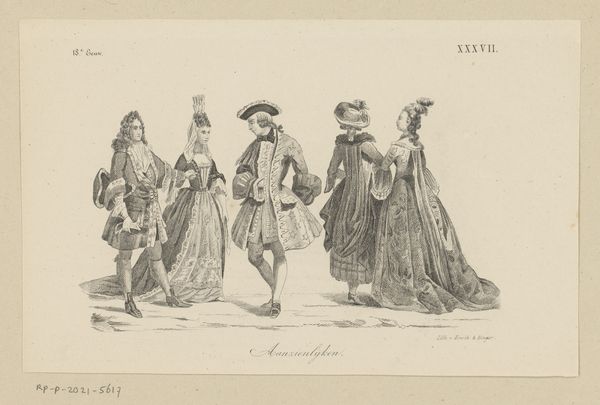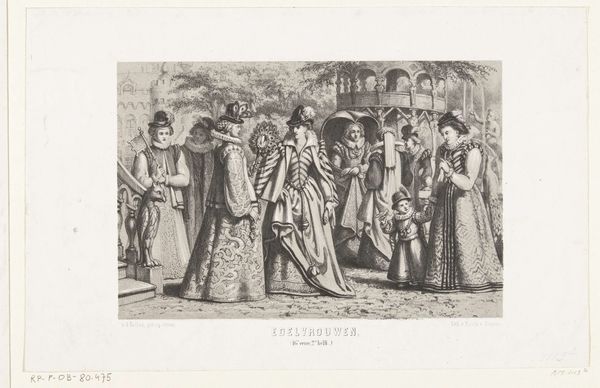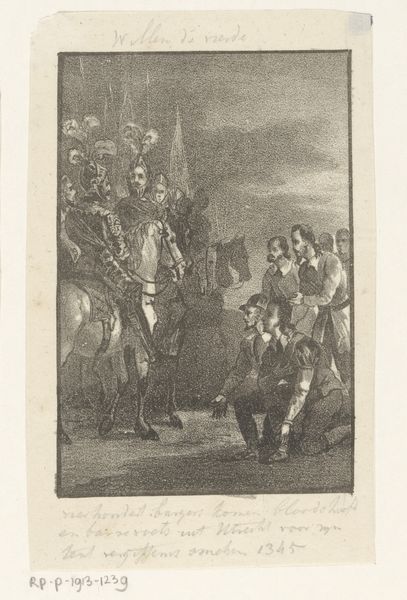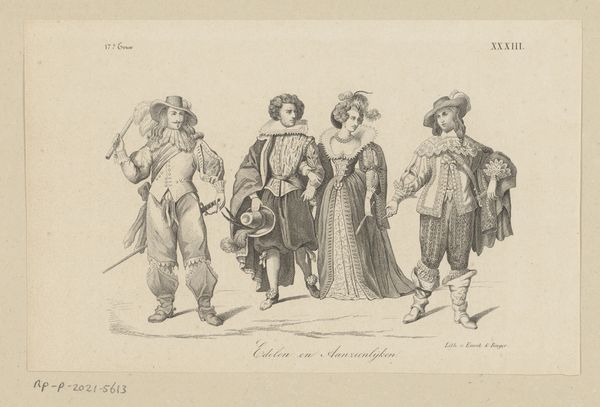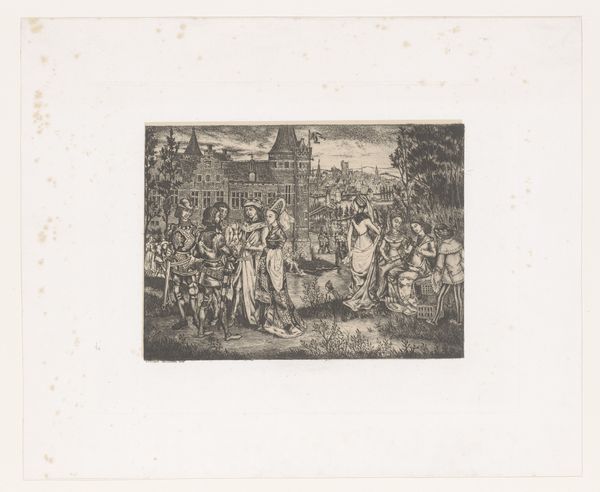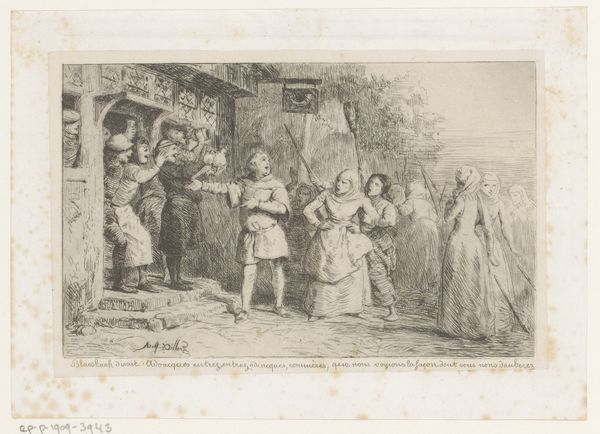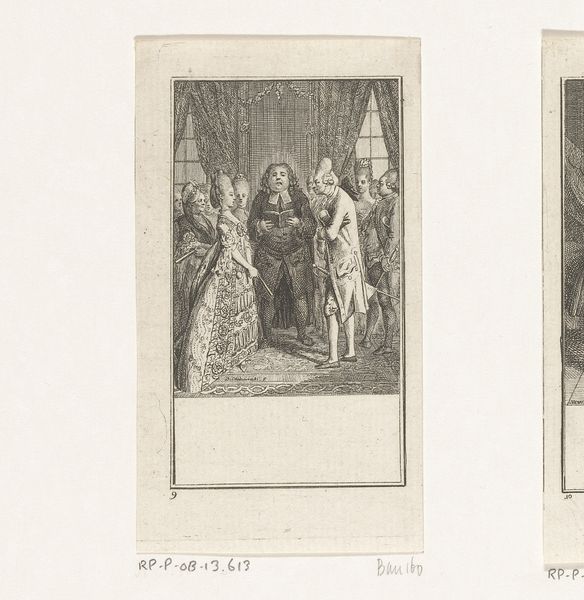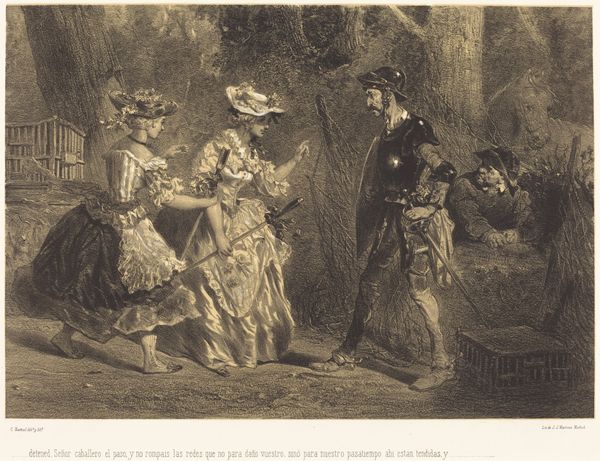
Stoet figuren in historische kleding in een landschap nabij een kasteel 1840 - 1870
0:00
0:00
print, etching
#
medieval
#
narrative-art
# print
#
etching
#
old engraving style
#
landscape
#
figuration
#
genre-painting
Dimensions: height 170 mm, width 275 mm
Copyright: Rijks Museum: Open Domain
Curator: Before us we have a print from the Rijksmuseum collection, "Stoet figuren in historische kleding in een landschap nabij een kasteel," which translates to "Procession of Figures in Historical Clothing in a Landscape near a Castle." It's attributed to Van den Kerckhoven and believed to date from between 1840 and 1870. It's executed as an etching. Editor: My initial reaction is one of observing meticulous detail and what strikes me as the almost somber or grave dignity of the figures represented in the print, despite its small scale. The monochromatic tonality enhances the mood, while the textural differences in the garments create subtle shifts in form. Curator: Absolutely. Contextually, such scenes experienced a revival during the Romantic period as society became increasingly focused on narratives rooted in the past. It also aligns with broader trends in European art during the mid-19th century of artists turning to the medieval era. It could even connect to growing nationalist sentiment with people wishing to forge imagined collective memories. Editor: Focusing solely on the intrinsic elements, the composition directs the viewer's eye left to right. Notice the carefully arranged grouping of figures; some face directly outward while others are angled towards each other creating a sense of dynamic internal relationships and shared glances. This directs one’s focus back to the compositional design elements, enhancing visual depth and structural symmetry. Curator: Beyond the formal choices, the work reflects genre painting trends prevalent at that time which frequently combined realistic detail with narrative themes drawn from historical sources to provide an intimate view into another imagined reality. The etching also evokes that very time, and lends a documentary flavor to a fabricated story. Editor: Do you think that choice of using printmaking—specifically etching—enhanced this perception and reception? Curator: Undeniably! Etching, with its line-based structure, evokes a tangible, artisanal aura to what might otherwise have been considered a straightforward illustration in paintings during those times of burgeoning print culture and cheap access to information. By emphasizing lines that carve out character and detail, it transforms from mere imagery into what resembles an authentic scene documented and then made accessible. Editor: Yes! Looking at it now I noticed the expert distribution of lights and darks, it is far from a uniform tonality and makes this etching truly come to life. I initially interpreted it as simple lines but in fact the whole picture, and meaning, really depends on a rich variation. Curator: A crucial observation for interpreting narrative moments which provides not just illustrative scenes but invites reflection upon broader societal contexts framing perception of an ideal time period represented visually. Editor: Indeed. This was very enlightening. Curator: I concur! Thank you.
Comments
No comments
Be the first to comment and join the conversation on the ultimate creative platform.


